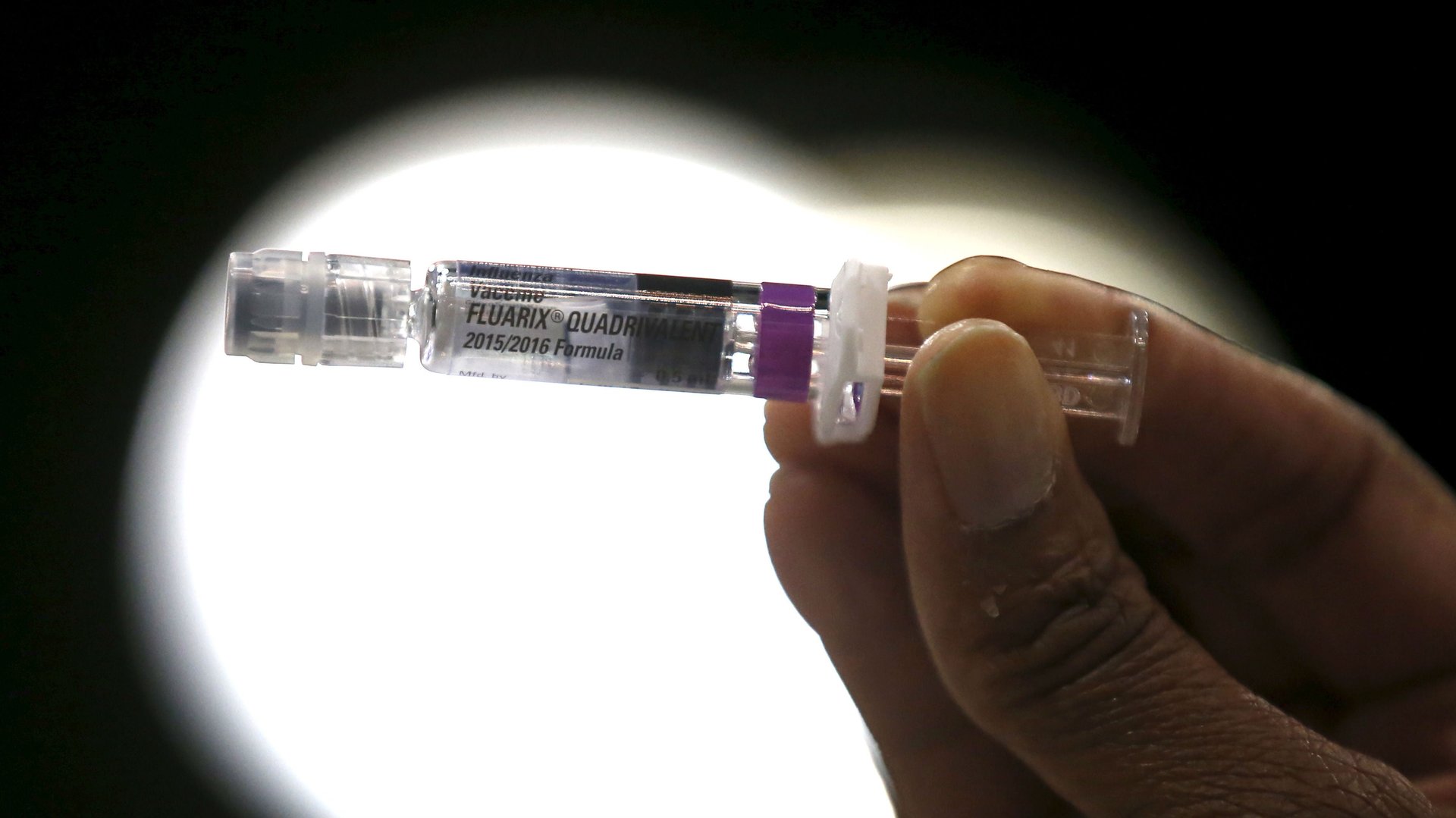A virus mutation has made this year’s flu vaccine less effective
In addition to holidays and sweater weather, winter bring with it a less than welcome event: flu season. This year, experts are warning that flu season will be particularly nasty—in part, they believe, because of a less effective vaccine.


In addition to holidays and sweater weather, winter bring with it a less than welcome event: flu season. This year, experts are warning that flu season will be particularly nasty—in part, they believe, because of a less effective vaccine.
The annual flu vaccine development process begins several months before each flu season. In February, a global group of researchers meets at the World Health Organization to identify three or four strains of the influenza virus they think will infect folks in the northern hemisphere, based on what made people sick in the southern hemisphere’s most recent flu season. (Researchers meet in September to strategize for the southern hemisphere’s flu season, and so on). This approach usually provides effective coverage from the flu for most vaccine recipients—well, 40 to 60% of the time, which is pretty good in terms as far as vaccine coverage goes.
The trouble is, the makeup of the viruses can change in the blink of the eye, because virus strains constantly mutate. Although researchers have clues about what a virus did previously, they’re usually guessing what specific changes will happen next.
To create a vaccine for each flu strain, manufacturers grow billions of WHO-selected viruses in chicken eggs, STAT reports. Scientists manipulate these home-grown viruses to make them benign, or create a chemical lookalike, which—in the form of a vaccine—gives our immune systems a head start to prepare itself for future microbial invaders.
Viruses don’t grow naturally in eggs. They need to mutate in order to do so. Usually, these mutations don’t affect the vaccine later on. But when they do, they can render them effectively useless. This seems to be the case with the batch of flu vaccines given out this year, Anthony Fauci, the director of the National Institutes of Health’s National Institute of Allergy and Infectious Diseases, told a local Washington DC radio station. Australia had a really bad flu season, Fauci said, and they used a similar vaccine to what has been released in the US this flu season. The country is often used as a model for how vaccines will perform in the States.
A commentary published in the New England Journal of Medicine this week estimated that current vaccines are only 10% effective against this year’s main flu strain, called H3N2. The authors theorized that this was in part due to this mutation and in part because of a complication with the antibody serums used to make the vaccine fit for people.
H3N2 is also a particularly nasty strain, Fauci said. “We’re seeing now that the vast majority of the strains that are early-circulating now right now in the United States…are this H3N2, which historically is always the worse influenza, for example, than an H1N1,” Fauci said. To put it into perspective, back when H1N1 was making headlines as swine flu in 2009, it infected just over 51,000 folks in Australia. This year, H3N2 sickened over 215,000 Australians.
Experts are also concerned about other strains of the flu viruses circulating that are particularly hard on older adults, Danuta Skowronski, an influenza epidemiologist at the British Columbia Center for Disease Control, told STAT.
Even if the outlook is bleak, you should still definitely get a flu shot if you haven’t already, as it does provide effective protection against several strains, and a quick shot with minimal side effects is worth it to avoid days of being stuck in bed. But best remember to wash your hands too.